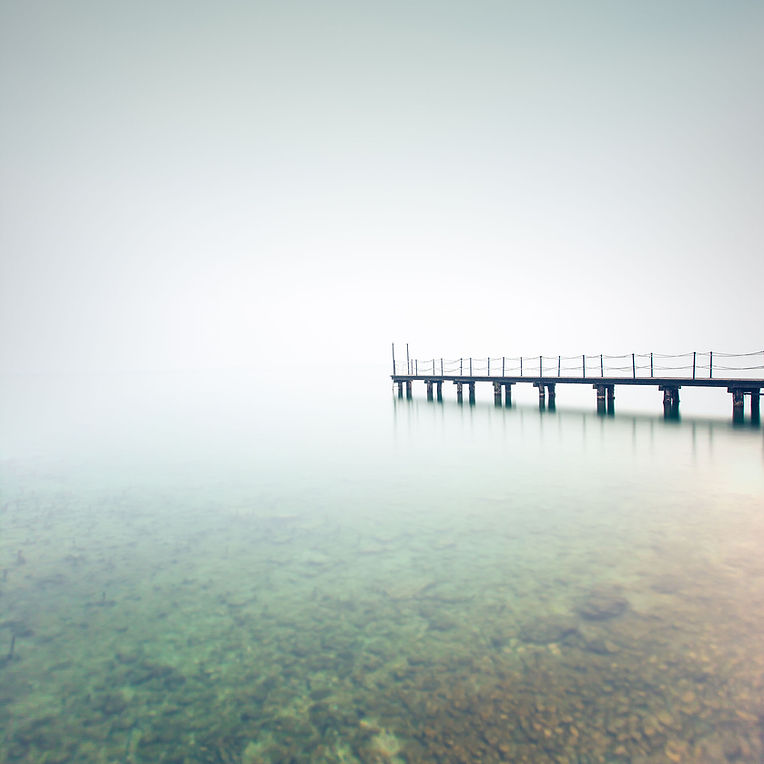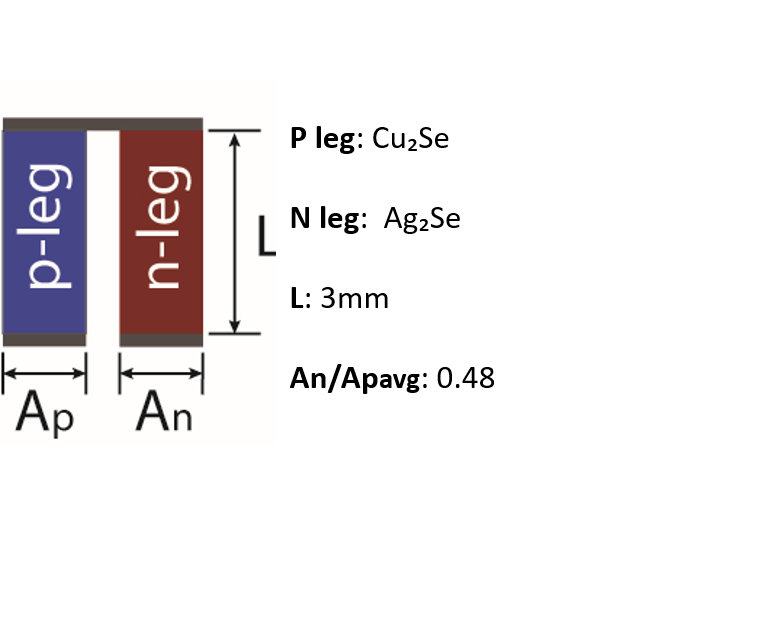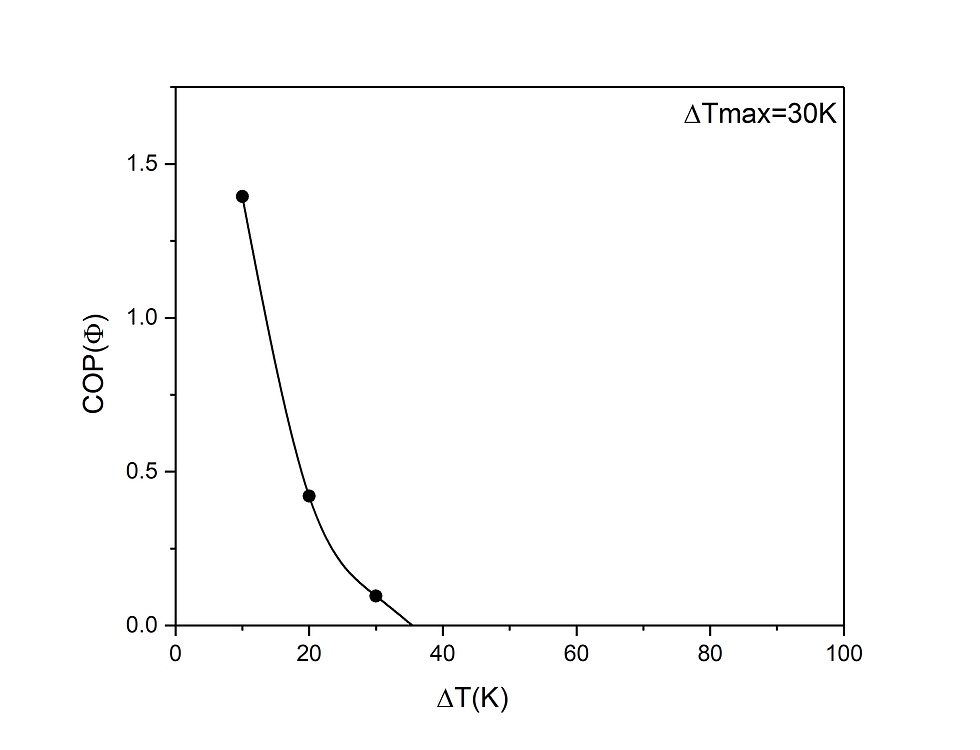
Device Design
Here we computed the performance of a few pairs made of both commecial materials and other promising candidates. For each case we provide the best cross section ratio of the legs, their best COPs under different temperature differences across the device. The maximum temperature difference they can achieve (which is determined by a small COP = 0.1 to account for non-ideal conditions). The best current densities to maximize COP under different temperature differences, and the cooling power density Qopt under each condition. It also provides how COP and Q change with input current density to the pair, under a few temperature differences.
For simplicity we arbitrarily set the length of
legs to 3mm. The hot side temperature is set
a little above the room temperature at 340K,
representing a condition with conservative
heat dissipation measures.
In the future, we plan to make this tab interactive, so you can specify a temperature difference, hot side temperature, or leg length, to get all the information regarding the performance of a pair. You can also choose a n-leg material and a p-leg material and see how well they work together, and would it be better with a unicouple design. You might even be able to upload the properties of your own materials and let us find the best design for you.


























